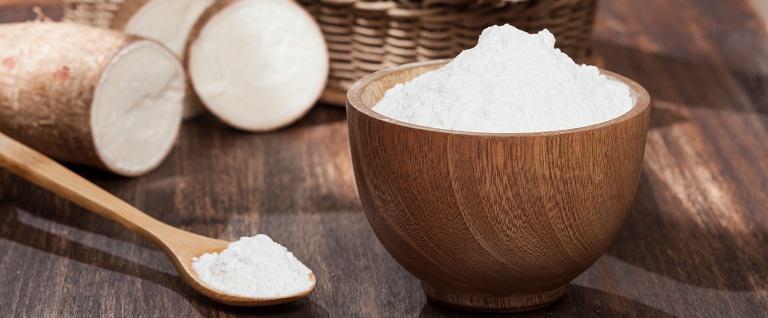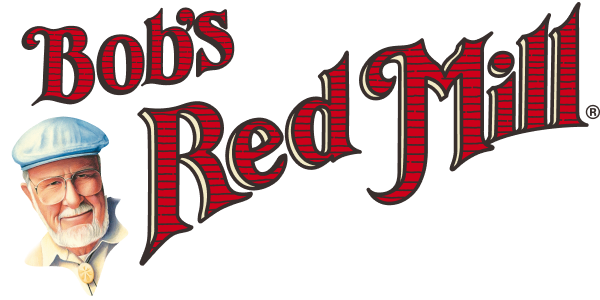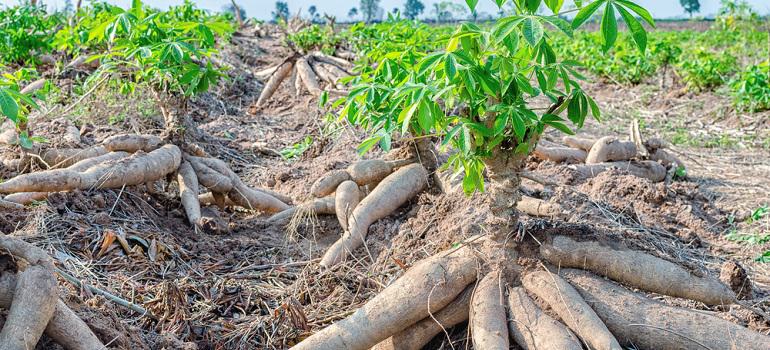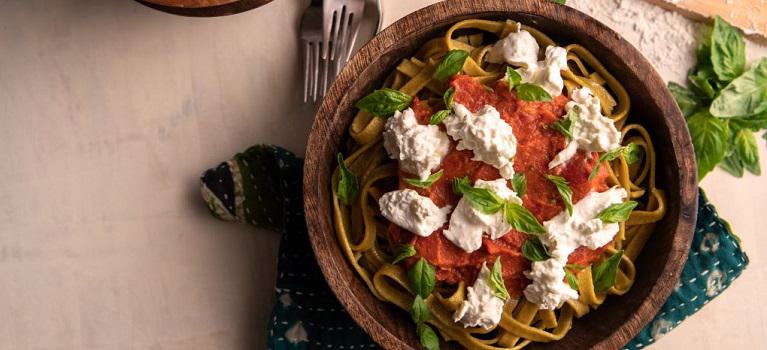


There used to be just one of two flour options on shelvesthe most popular being all-purpose flour. However, as our diets expanded to fit new lifestyles such as gluten free, paleo, keto and vegan, the number of traditional flour substitutes grew. In fact, the amount of flour substitutes on shelves grew so large, you've likely found yourself wondering which to choose. Of course, when selecting a flour substitute, your dietary restrictions should be taken into account and whether you're searching for something gluten free or paleo, there's an option available. Standard go-to's like almond flour and buckwheat flour have made quite a splash in the health food industry, but another flour's quickly winning over the space in our pantry. Enter cassava flour. A naturally paleo flour, cassava flour is an excellent option for individuals who have food allergies. It's also easy to substitute into recipes and has a light taste and texture that creates deliciously fluffy baked goods. If you're new to cassava, continue scrolling as we answer common questions like "what is cassava flour?" and describe how to use it.
Before we dive into the many benefits of cassava flour while baking, let's start with the basics: what is cassava? Cassava, a fibrous plant native to Brazil and the tropical areas of America, has coarse skin and a bright white interior flesh. Though cassava is the most common name, this plant is also often labeled as yuca, manioc, casabe and mandioca. The cassava plant has been enjoyed for decades, and it is still a staple in many of the indigenous cultures where it originated from.
 There are several ways that you can use cassava. The white flesh on the inside, known as "cassava meat," is often sliced and then baked or roasted, prepared similarly to the way you would a potato. Cassava meat is also a common ingredient in stir-fries, omelets and soup. Cassava flour, the most common way to consume it, is a powder-like substance used to create delicious baked goods. Additionally, this superfood of a vegetable can be juiced and added to drinks, smoothies and soups for a lift of flavor.
There are several ways that you can use cassava. The white flesh on the inside, known as "cassava meat," is often sliced and then baked or roasted, prepared similarly to the way you would a potato. Cassava meat is also a common ingredient in stir-fries, omelets and soup. Cassava flour, the most common way to consume it, is a powder-like substance used to create delicious baked goods. Additionally, this superfood of a vegetable can be juiced and added to drinks, smoothies and soups for a lift of flavor.
So, now that we know more about cassava and where to find it, how does cassava flour come into play? Before gluten free flour options were popular, cassava meat was the most common way to enjoy this plant. Now, cassava flour is gaining momentum as the go-to gluten free flour, making it more popular than the cassava plant itself. But what is it about cassava that people love? When baking gluten free goods, multiple flours are required to recreate that same taste and consistency that wheat flour provides. However, with cassava flour, that's not the case. Instead, cassava flour is an extremely close replacement for wheat flour and can be used to bake many of the same things like bread. Other wheat flour replacements also include arrowroot flour, coconut flour and brown rice flour. That being said, it does share some slight differences. So, before you head to the store to purchase a bag, here are five things that you need to know.
What is cassava flour made from? As we mentioned previously, cassava flour is plant-based and originates from a tuberous root vegetable, a staple food in South America and parts of Africa and Asia. Is cassava flour gluten free and is cassava flour good for you? Because cassava is a vegetable, it's naturally free of gluten, grains and nutsthree of the most common food allergens. In addition, its texture is similar to that of yam or potato, allowing it to work well in many vegan, vegetarian, paleo and gluten free recipes. Read our blog on cassava flour nutrition for a complete breakdown.
Though the terms are often used interchangeably, cassava flour is not the same thing as tapioca flour. While they may come from the same plant, cassava flour is produced from the fibrous plant, whereas tapioca flour derives from the cassava root through a process of washing and pulping. The pulp is then pressed and dried to create a starchy substance known as tapioca flour. Because cassava flour is the whole root and not just the starch, it contains more dietary fiber than tapioca flour, making it a better substitute for wheat flourespecially when making recipes like this Cassava Flatbread.
Cassava flour is made from the starchy and tuberous cassava root and because of this, it has a pretty high carbohydrate profilehigher than you likely imagined. In fact, cassava has nearly double the number of carbohydrates as a sweet potato. While this makes it a valued food for some, others may choose not to include it in their diet based on the carbohydrate content alone. Though an excellent gluten free flour, cassava flour is not ideal when following low-carb diets like the ketogenic diet. If you're not following a specific diet, then cassava flour is excellent to eatjust try not to eat it for every meal.
 One of the things people love most about cassava flour is its wheat-like properties. The similarities between the two flours make it a widespread substitution in all-purpose and wheat flour recipes. Often, when cooking with gluten free flours, a binding agent will need to be added and several flours mixed to create the soft baked goods that we know and love. When baking with cassava flour, these extra add-ins are not needed. Cassava flour bonds well with other ingredients and can be used on its own. While cassava flour can be substituted for wheat flour at a 1:1 ratio, it's denser than wheat flour which causes it to absorb more water. We suggest starting with less cassava flour (about 3/4 cup for every 1 cup of wheat flour) and adjusting the amount as needed to account for the differences. Additionally, we recommend purchasing quality cassava flour from a brand you trust to produce the best results. Unfortunately, due to cassava flour's high demand, many low-quality versions are being created. And while they will likely work in your favorite recipe, the slightly sour flavor of low-quality flour may transfer over to your baked goods.
One of the things people love most about cassava flour is its wheat-like properties. The similarities between the two flours make it a widespread substitution in all-purpose and wheat flour recipes. Often, when cooking with gluten free flours, a binding agent will need to be added and several flours mixed to create the soft baked goods that we know and love. When baking with cassava flour, these extra add-ins are not needed. Cassava flour bonds well with other ingredients and can be used on its own. While cassava flour can be substituted for wheat flour at a 1:1 ratio, it's denser than wheat flour which causes it to absorb more water. We suggest starting with less cassava flour (about 3/4 cup for every 1 cup of wheat flour) and adjusting the amount as needed to account for the differences. Additionally, we recommend purchasing quality cassava flour from a brand you trust to produce the best results. Unfortunately, due to cassava flour's high demand, many low-quality versions are being created. And while they will likely work in your favorite recipe, the slightly sour flavor of low-quality flour may transfer over to your baked goods.
Now that you've done your cassava flour homework, it's time to put your cooking skills to the test. Start by making one of the recipes below.
Cassava Pasta
Pasta is a widely loved dinner favorite, and because of its light taste, it can be transformed with various ingredients and flavors. Put a gluten free spin on your weekly dinner menu by making this Cassava Pasta. So simple to make and entirely gluten free, it's an excellent cassava flour recipe if you're baking for those with food sensitivities. Plus, it's so great even people who can eat gluten will still enjoy it.
Cassava Brownies
 Brownies are a classic dessert enjoyed worldwide. Their chocolatey goodness has won over the hearts of both children and adults. However, when switching to a gluten free or paleo diet, you may find that traditional brownies are one of the most challenging foods to say goodbye to. But don't allow yourself to sulk for too long because we have a solution. Cassava flour is the perfect gluten free flour to make brownies with. Its light, powdery nature recreates a brownie's classic fluffy character sans gluten. Additionally, its neutral taste makes it easy to mix with all ingredientseven sweet ones like chocolate. So, instead of thinking about all of the foods you will miss on your new diet, change your outlook to a more positive one and think of all the amazing desserts that you'll get to try. By using cassava flour as a substitute for all-purpose flour, you can create goods, like these Cassava Flour Brownies, that taste nearly identical to their gluten-filled counterparts. Using cassava flour to create gluten free recipes is an excellent way to make delicious dishes that everyone can enjoy. Naturally gluten free and paleo, It's bound to become a staple flour in your kitchen. And, because cassava flour is a low-allergen food, it makes an excellent base for baked goods that you plan on serving to a crowdespecially a group with food restrictions. For example, use cassava flour to make brownies for your kids and friends to enjoy, or opt for a more savory dish and turn it into pasta. No matter what you choose to create, we know it will be delicious. From everyone at Bob's Red Mill, we wish you the best on your baking journey!
Brownies are a classic dessert enjoyed worldwide. Their chocolatey goodness has won over the hearts of both children and adults. However, when switching to a gluten free or paleo diet, you may find that traditional brownies are one of the most challenging foods to say goodbye to. But don't allow yourself to sulk for too long because we have a solution. Cassava flour is the perfect gluten free flour to make brownies with. Its light, powdery nature recreates a brownie's classic fluffy character sans gluten. Additionally, its neutral taste makes it easy to mix with all ingredientseven sweet ones like chocolate. So, instead of thinking about all of the foods you will miss on your new diet, change your outlook to a more positive one and think of all the amazing desserts that you'll get to try. By using cassava flour as a substitute for all-purpose flour, you can create goods, like these Cassava Flour Brownies, that taste nearly identical to their gluten-filled counterparts. Using cassava flour to create gluten free recipes is an excellent way to make delicious dishes that everyone can enjoy. Naturally gluten free and paleo, It's bound to become a staple flour in your kitchen. And, because cassava flour is a low-allergen food, it makes an excellent base for baked goods that you plan on serving to a crowdespecially a group with food restrictions. For example, use cassava flour to make brownies for your kids and friends to enjoy, or opt for a more savory dish and turn it into pasta. No matter what you choose to create, we know it will be delicious. From everyone at Bob's Red Mill, we wish you the best on your baking journey!